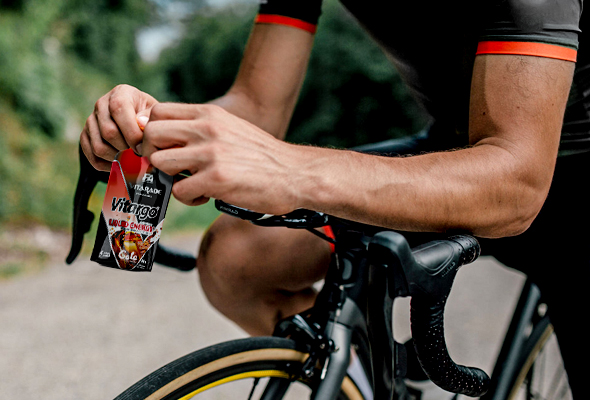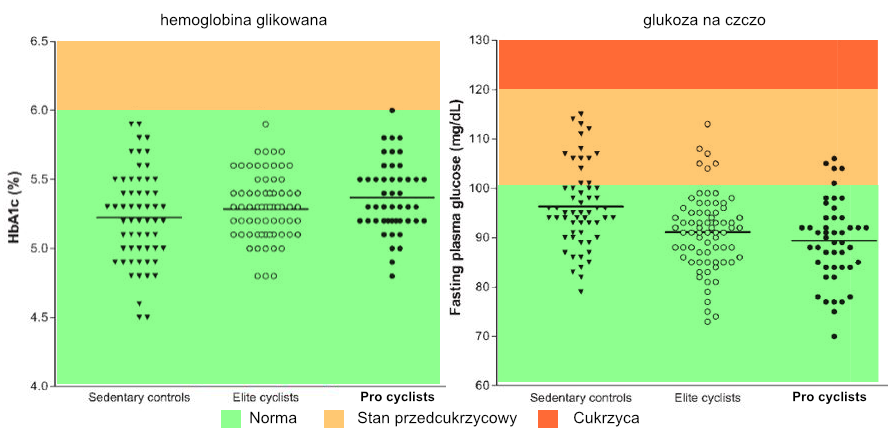
It is well known that diet is crucial to a person’s health and can have a bearing on the risk of developing civilization diseases. Consuming too much sugar, fat and salt can lead to heart disease, hypertension, obesity and diabetes. In turn, a diet rich in fiber, vitamins and minerals, as well as low-fat proteins can help reduce the risk of these diseases. Just how does this apply to professional athletes, who have above-average energy requirements?
Insulin resistance and physical activity
Every year there is a continuous increase in the incidence of acquired diabetes (type 2), which is a consequence of lifestyle. The first warning sign is an increase in fasting blood sugar levels due to insulin resistance in the cells. One of the very effective ways to combat insulin resistance is to introduce physical activity, e.g. cycling. Working muscles generate a high demand for sugar, which in extreme cases can even lead to hypersensitivity to insulin and post-exercise hypoglycemia. It is estimated that after each physical effort (like an hour on the trainer), insulin sensitivity increases for about 48 hours.
Are athletes at risk of diabetes?
The question that arises is: is physical activity really able to minimize the negative effects of highly processed food, including high-glycemic gels, bars and carbohydrate drinks? The answer to this question can be found in a very interesting study published in the prestigious International Journal of Sports Medicine, in which the glycemic control of cyclists at varying degrees of proficency was assessed (Lippi et al., 2008). Two laboratory parameters were assessed: fasting glucose level- determining the proper control of sugar metabolism and glycosylated hemoglobin (HbA1c) – a parameter reflecting the average blood glucose concentration in the period of 2-3 months preceding the study.
As a result of the conducted analysis, contradictory results requiring conscious interpretation were demonstrated. It turns out, that athletes who spend the most time on their training, have, on average, the lowest fasting blood sugar, which is the opposite of diabetic conditions. At the same time, they recorded the highest HbA1c results, which in this case indicate a large amount of carbohydrates consumed, and not metabolic disorders.
To sum up, although the diet of professional athletes is rich in various sources of carbohydrates (including high-glycemic dietary supplements such as gels, bars and drinks), it does not seem to have a negative impact on the control of the body’s blood sugar economy. What’s more, the study by prof. Giuseppe Lippi’s team showed that people classified as „elite” and „professional cyclist” are characterized by the lowest average fasting glucose concentration, a result that stands in opposition to the condition of physically inactive people and those with metabolic disorders.

Dg. 1. The results of the study subjects in relation to the standards. Adapted from Lippi et al., 2008.
Bibliography
Lippi, G., Montagnana, M., Salvagno, G. L., Franchini, M., & Guidi, G. C. (2008). Glycaemic control in athletes. International Journal of Sports Medicine, 29(1), 7–10.
Sign up for training advice and claim a 10% discount on your first order.
daily workout and nutritional advice
to maximise performance
exclusive discounts and offers
Be the first to hear about new products
Fitness Authority® Sp. z o.o.
Konna 40, Otomin – Poland
NIP: 957 103 70 01
KRS: 0000355208
P: +48 58 522-07-56
E-mail: contact@vitarade.com